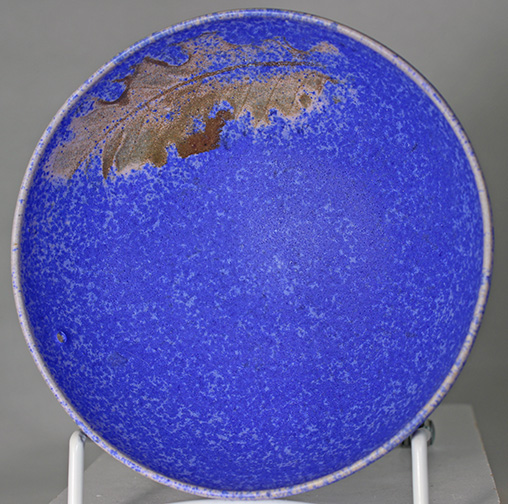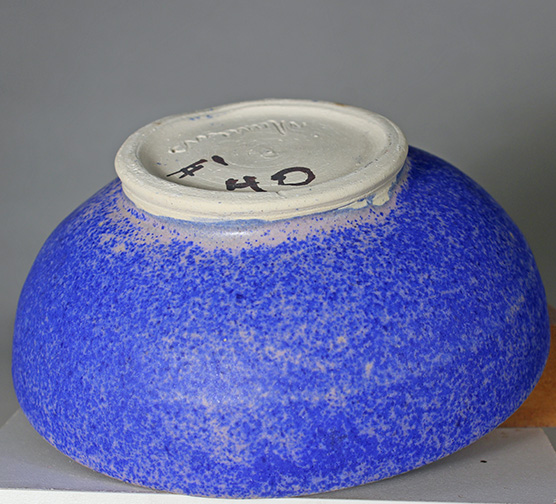cobalt breaking color
Glazes are fired at cone 6 in an electric kiln.
The kiln is cooled slowly, at a rate of 25 deg F an hour in the temperature interval 1750 deg F to 1650 deg F, with a 1 hour hold at 1650 deg F.
The first breaking pink glaze:

glaze zincSr_177 mug ~5 inches high
These glazes are minor variations of the above glaze refered to as the 'theme', the modifications are described with each glaze pair.
Variations on this glaze
glaze zincSr_180_0
Modifications are restricted to changes in the relative proportions of the bases (fluxes) in the seger formula of the 'theme' glaze. Some MgO of the 'Theme' glaze is replaced with ZnO. The result is a more fusible glaze in which the pink of the 'Theme' is rendered lavender, and the blue stronger.
 |
 |
glaze zincSr_180_1
 |
 |
The silica and alumina are lower in this glaze than in the 'theme', in addition some MgO in the 'theme' is moved to SrO in this glaze. The result is a less fusible glaze, the pink is nearly gone to be replaced by a pale blue. We see large regions of the two distinct blues, what I call for want of a better term "blotchy segregation".
glaze zincSr_180_2
 |
 |
The MgO in this glaze is lower than in the theme glaze, Li2O and SrO are higher. Again a less fusible glaze with prominent strong blue and pale blue regions. Another example of "blotchy segregation".